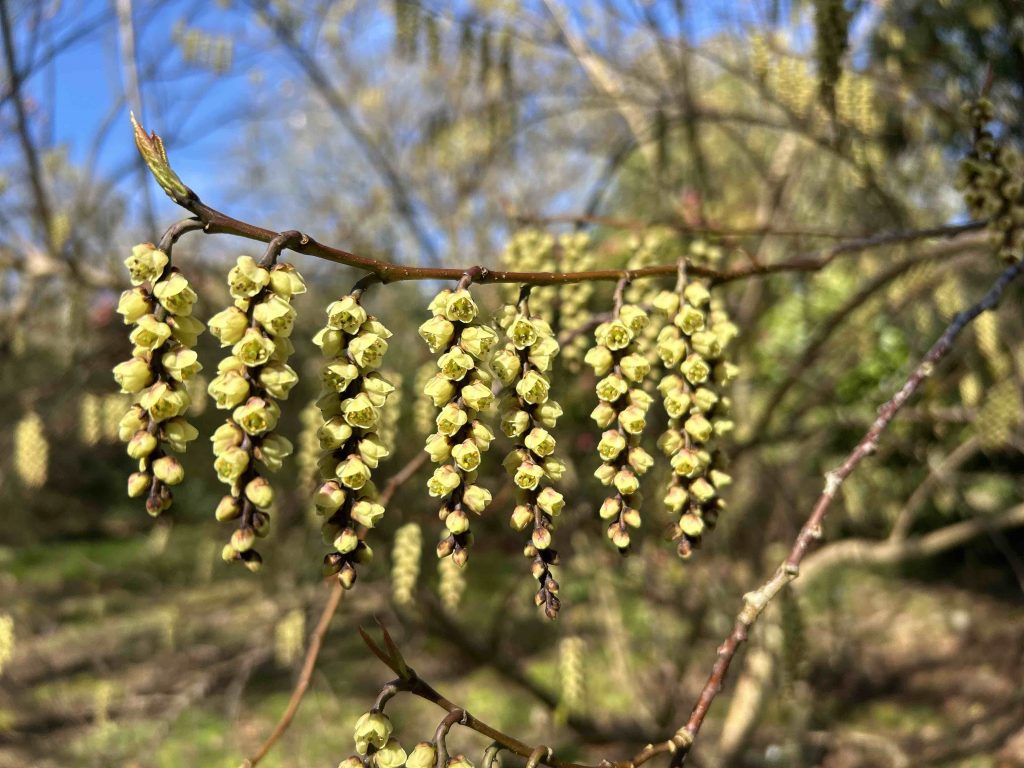
Spring has suddenly sprung and we are out and about enjoying the glories of the vibrant camellia and blousey magnolia. But take a good look around you and there’s one colour that is abundant at this time of year – as our gardening expert Alison Agnew reveals.
Mellow yellow
Yellow is a very common colour in flowers, second only to white in insect-pollinated species apparently. Several gardeners that I’ve met consider yellow ‘common’ in the other sense and entirely eschew the colour! But yellow is the most uplifting and glorious of flower colours – particularly the distinctly un-mellow tones – think shiny spring celandines and eye-popping summer Rudbeckias.
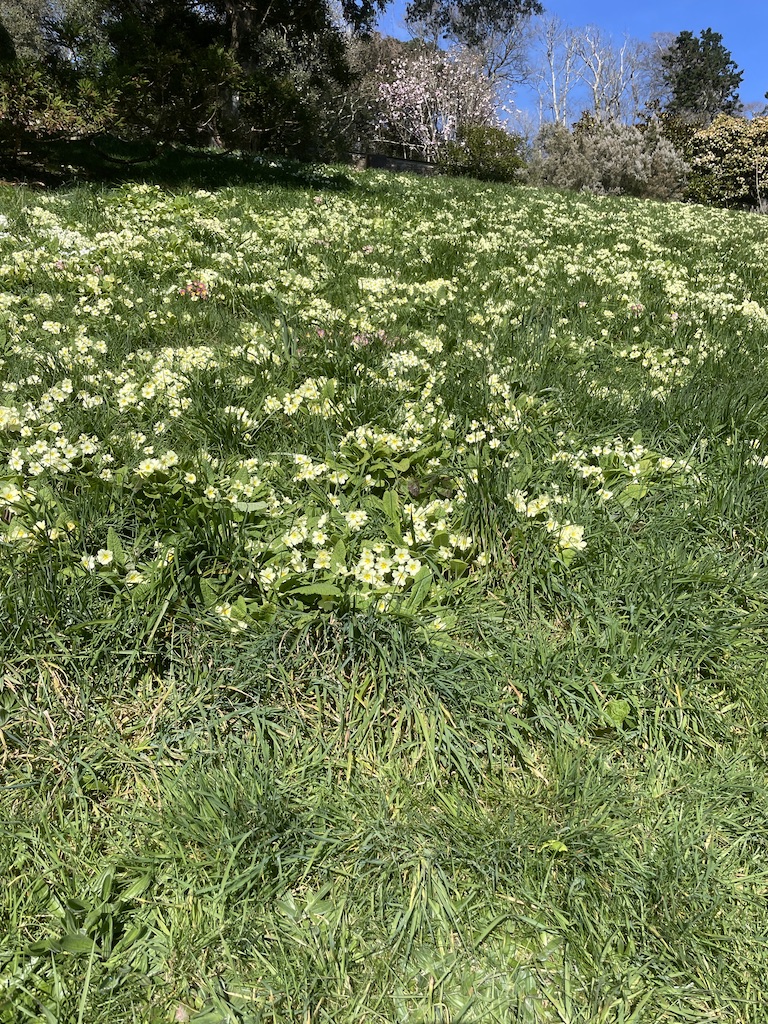
I’ve been struck by the dominance of yellow in spring flowers – banks of gorse, celandines and primroses in the wild and daffodils in fields and gardens as well as escapees on the roadsides. White and yellow flowers dominate in early spring, apparently because they are attractive to a wide range of early emerging pollinators including flies. Flies have limited colour perception so may be primarily attracted by the contrast between foliage and light coloured flowers. Blue and red flowers generally arrive later but yellow remains a common colour throughout the year – probably because yellow is cheaper to produce in energy terms than other colours.
I am planning a new garden and I think I will make a golden garden – dominantly yellow and orange. This will definitely be my last garden (for our golden years?) and, because it faces west, it will light up with the setting sun. It’s on a steep slope and will drop down from drier upper banks to shaded, lush, jungly lower levels. So I’ve been designing paths for a power barrow – and – compiling a list of good yellows from top to bottom and high to low. It will be so, so difficult to choose….
At the top of the garden, in full sun there are some great small trees to give some structure without creating a lot of shade.
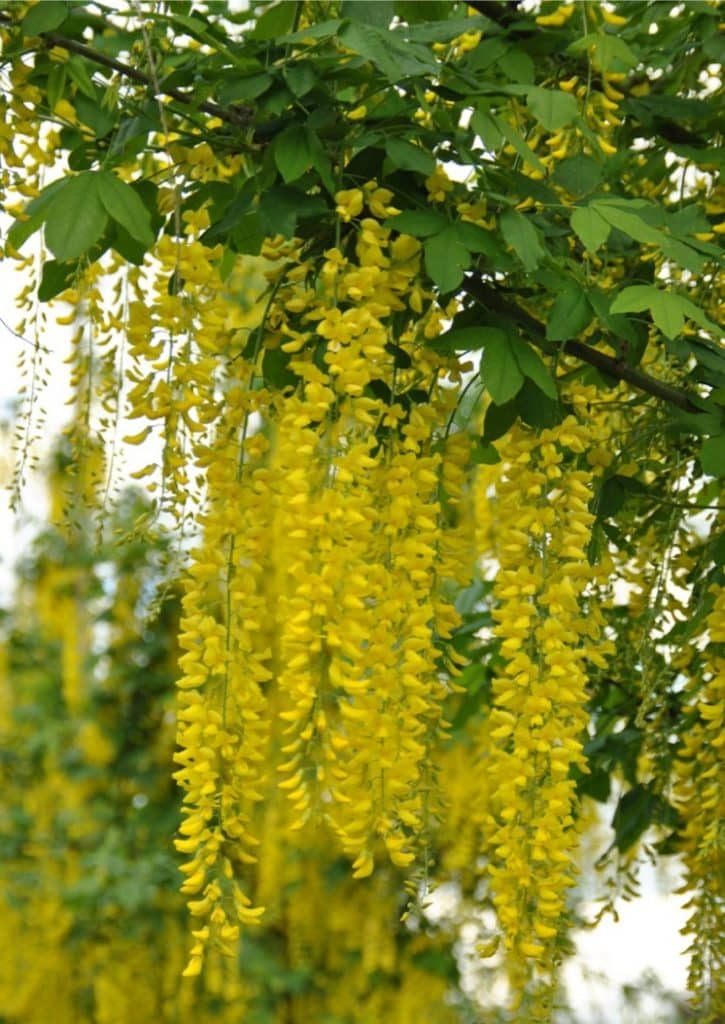
Laburnum. Starting with Laburnums- the commonest yellow-flowering trees – as beloved of suburban gardens as Pampas grass and Monkey Puzzle trees and much neglected in posh gardens unless they are tortured into tunnels. But they are beautiful small trees with a gently-splayed, slightly weeping form, tri-lobed leaves that unfurl from silvery buds, and trails of brilliant yellow pea flowers in late spring.
The other reason for Laburnum going out of fashion is its reputation for toxicity. I do wonder just how many children have been lost to eating Laburnum ‘mini pea pods’; but my sister did nearly lose her donkey. He ate a few sprigs and then ran round and round his field for 10 hours solid – a donkey on amphetamines!
There are only two species in the genus and only one variety – the hybrid Laburnum x watereri Vosii – that I now wish I had planted in my current garden. It flowers very freely and sets little seed. By now, it would have made a glorious cascade of golden yellow to greet the morning sun – a group of at least five winding down a steep bank. Maybe this time I’ll have the confidence to be so uncool.
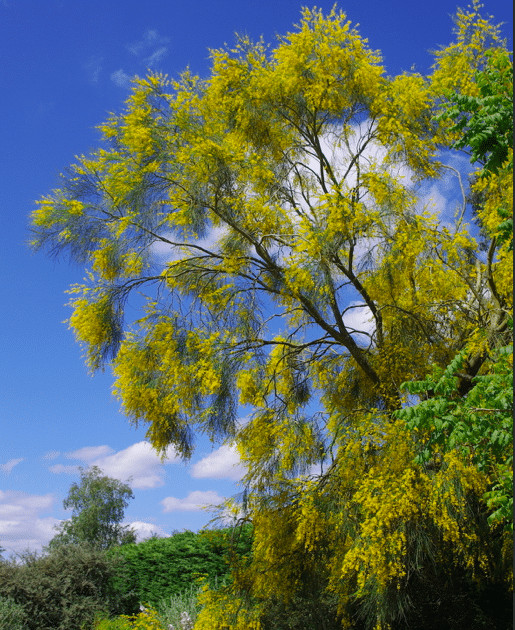
Genista aetnesis – Another member of the pea family, the Mount Etna broom makes a large lax shrub or small tree. Like other brooms, it has very small leaves and whippy stems so is very wind-tolerant. In a sunny spot, it will flower prolifically with brilliant yellow scented pea flowers in high summer.
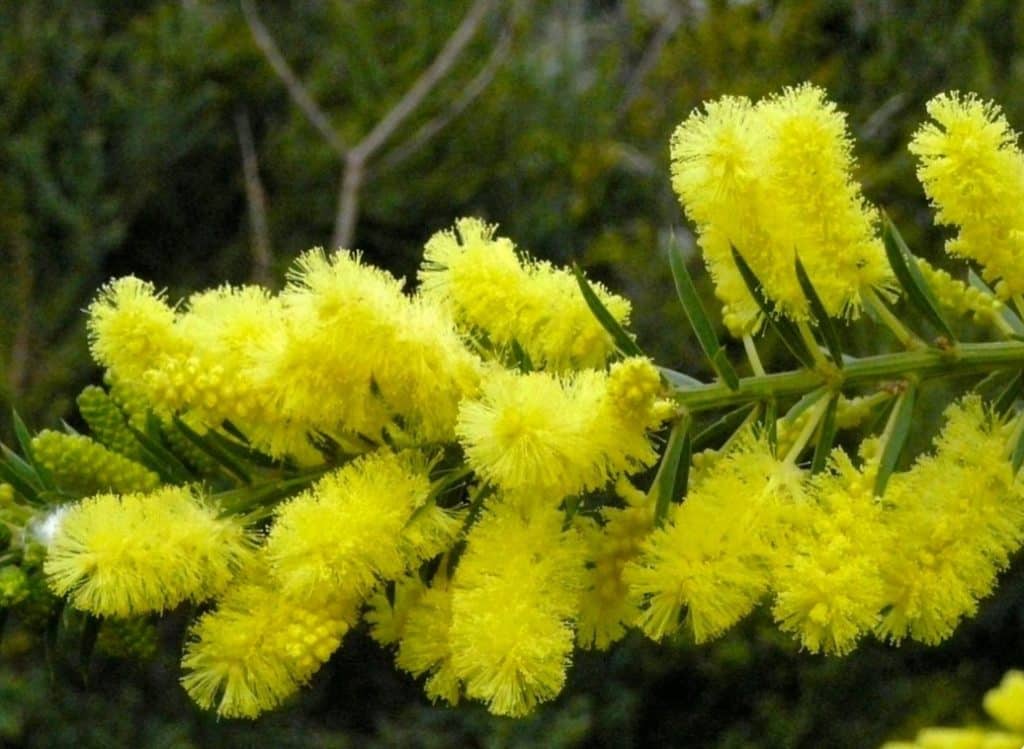
Acacia – The Mimosas are also in the pea family. Evergreen trees and shrubs hardy to -5C – several species should grow well on the Roseland. The flowers don’t look at all like pea flowers because the petals are tiny and they have masses of stamens so they look like fluffy balls or short racemes. A. dealbata is the toughest, with fine, silver-grey, filigree leaves and masses of bright yellow, scented flowers from January to April. It grows into a sizeable tree (15m +) in a sheltered spot. I’ve grown Acacia verticillata here on the Roseland too – a very pretty spreading bush with prickly leaves and soft yellow flowers in short racemes. I had mixed feelings when it succumbed to a hard winter – it was lovely to look at but the flowers smelt of wet nappies so I kept thinking that the nearby gas tank was leaking!
Further down the hill – other trees will be needed to create some shady areas:
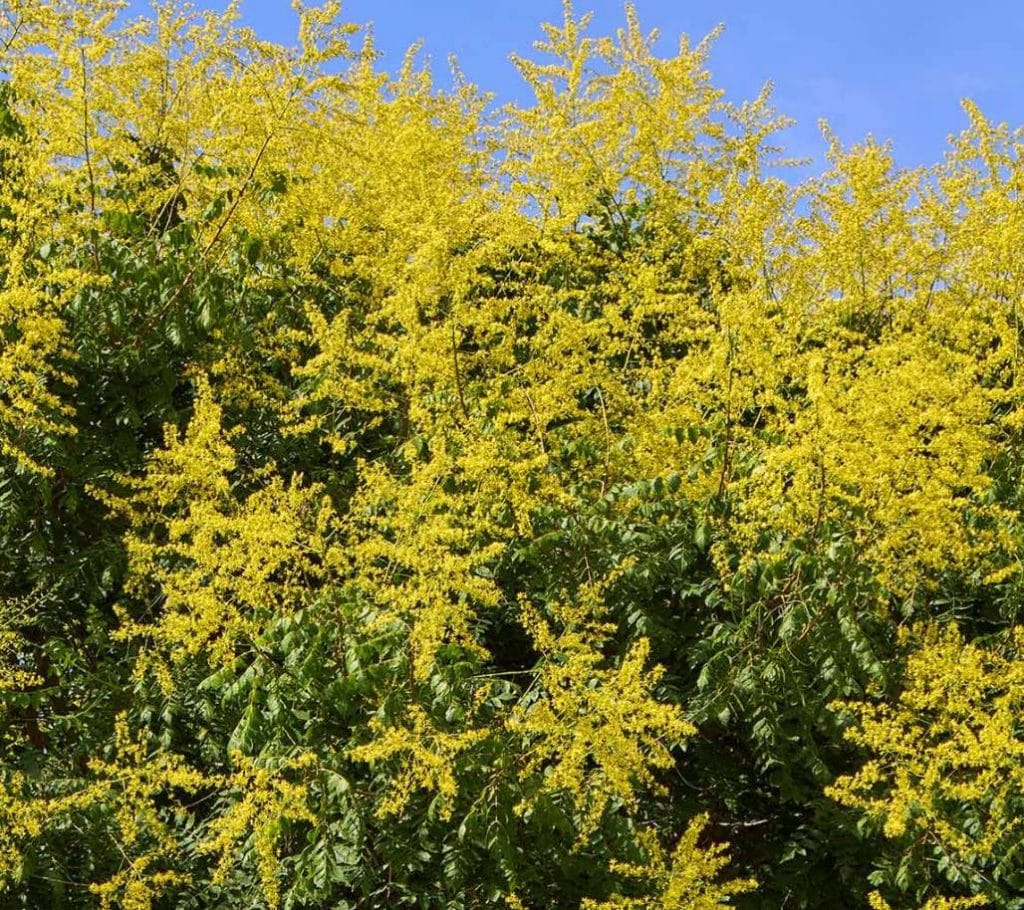
Koelreuteria – only one species from the Far East is readily available – K. paniculata, the Golden Rain Tree. This makes a broad-topped, medium-sized, deciduous tree with fine pinnate leaves that emerge pinkish and develop to a fresh green. It is tolerant of a wide range of conditions including wind but not salt. It flowers with large panicles of small clear yellow flowers in high summer followed by puffed-up seed pods that turn red in autumn. My tree in North Yorkshire did better than the one I have on the Roseland – I put it down to poor soil – but it has its feet down now and is paying its way.
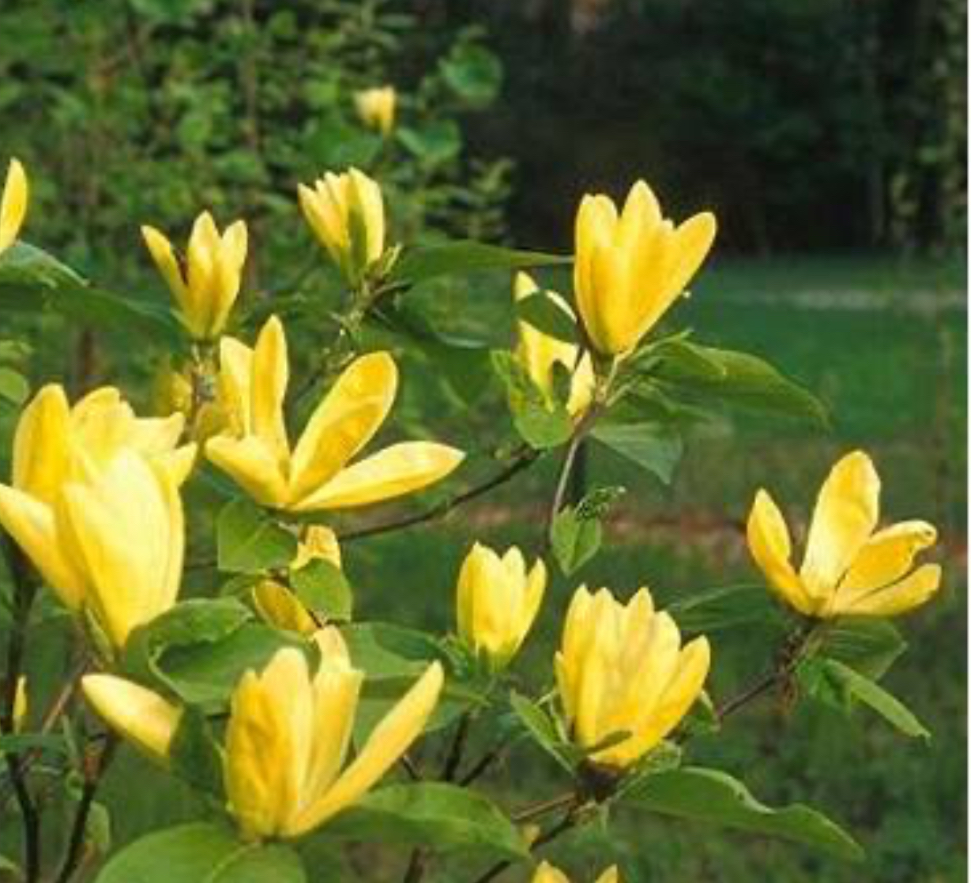
Magnolia – Many yellow flowered magnolias have been bred recently – mostly crosses between M. acuminata, M. brooklyensis and M. denudata. They vary a lot in depth of colour and flower shape and catalogues often flatter them. One of the most available is Magnolia Yellow Bird – a good mid yellow but with rather awkward shaped flowers. New varieties seem to appear every year. Burncoose Nursery rates M.Daphne as the deepest-coloured variety and the most suitable for a small garden. I have it – it flowered well from a young age and is developing into a very pretty upright tree. All the yellow hybrids flower late in the Magnolia season so they usually avoid frost and cold wind damage. If you want one, I advise a visit to Caerhays Castle in the next few weeks when many of the newer hybrids will be flowering so you can see the true colour and growth habit before you buy.
At the next level down there are so many lovely yellow flowering shrubs – here are just a few:
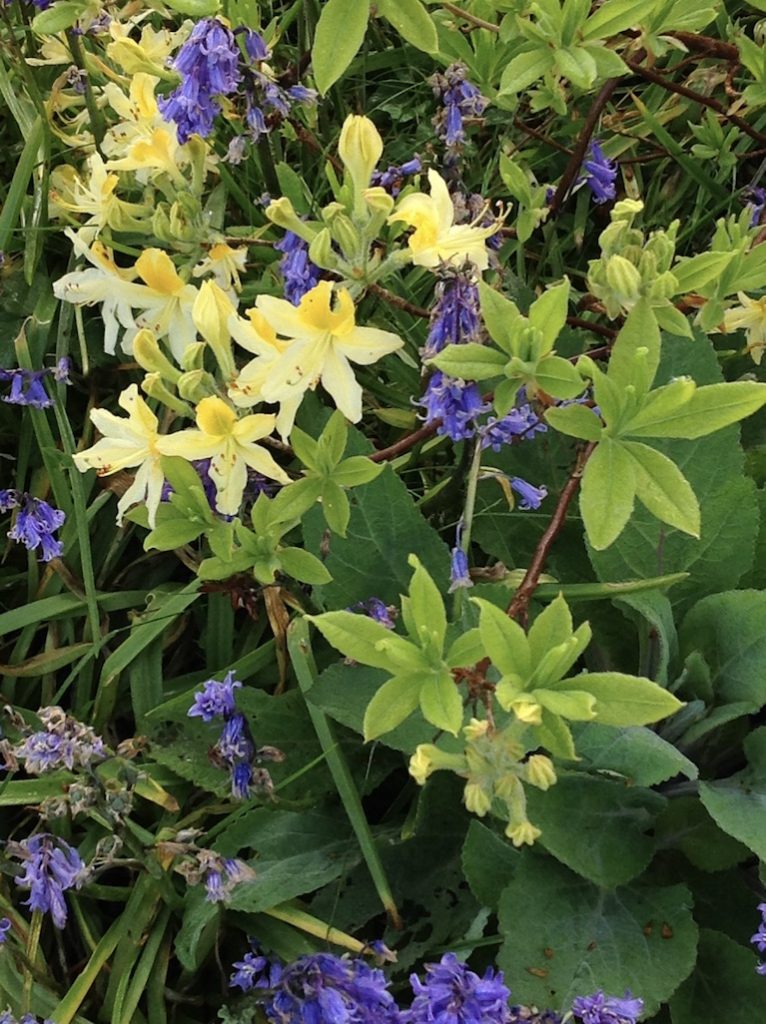
Azalea: I couldn’t be without Azalea ponticum – the most frequently grown deciduous azalea species – it has wide open, sweetly-scented flowers and good autumn colour. Several other desirables in this group include Azalea Narcissiflorum -clear yellow and also very fragrant, honeysuckle-like flowers.
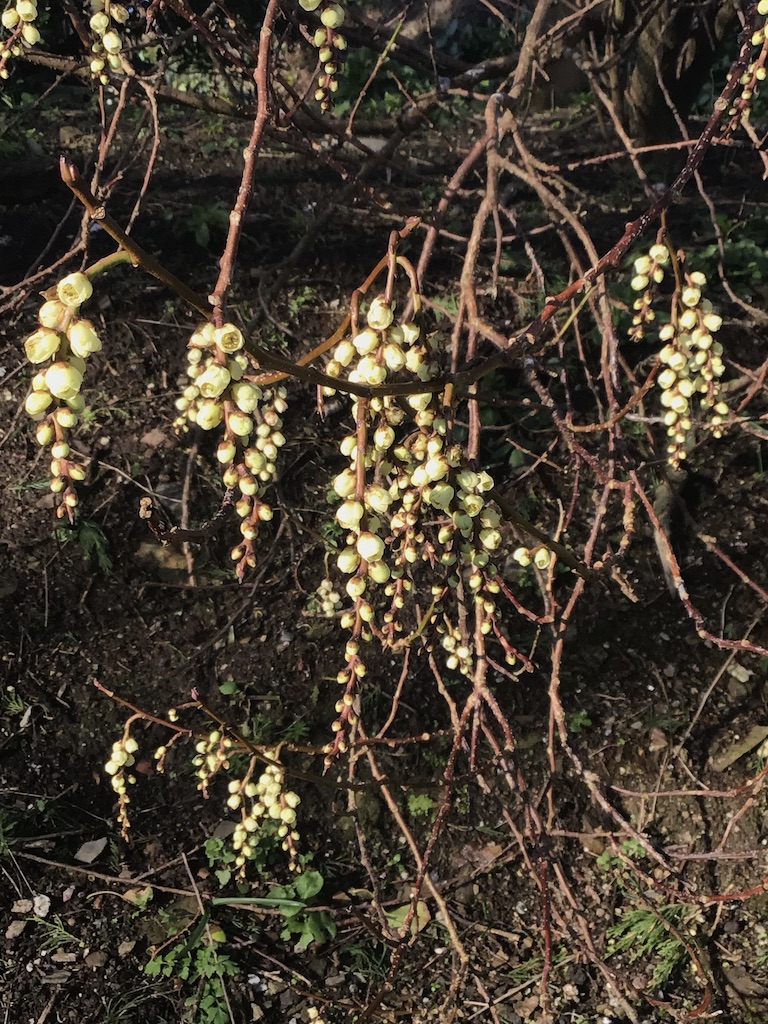
Stachyurus: These should be better known -very pretty racemes of primrose yellow little bells flowering on bare stems in early spring. I have two species, S.praecox and S.chinensis. They have similar flowers and habits – slightly weeping, they are best placed on a bank where you can look up at them. S.praecox starts to flower in February, and S.chinensis in March. Early emerging bumble bees dote on them.
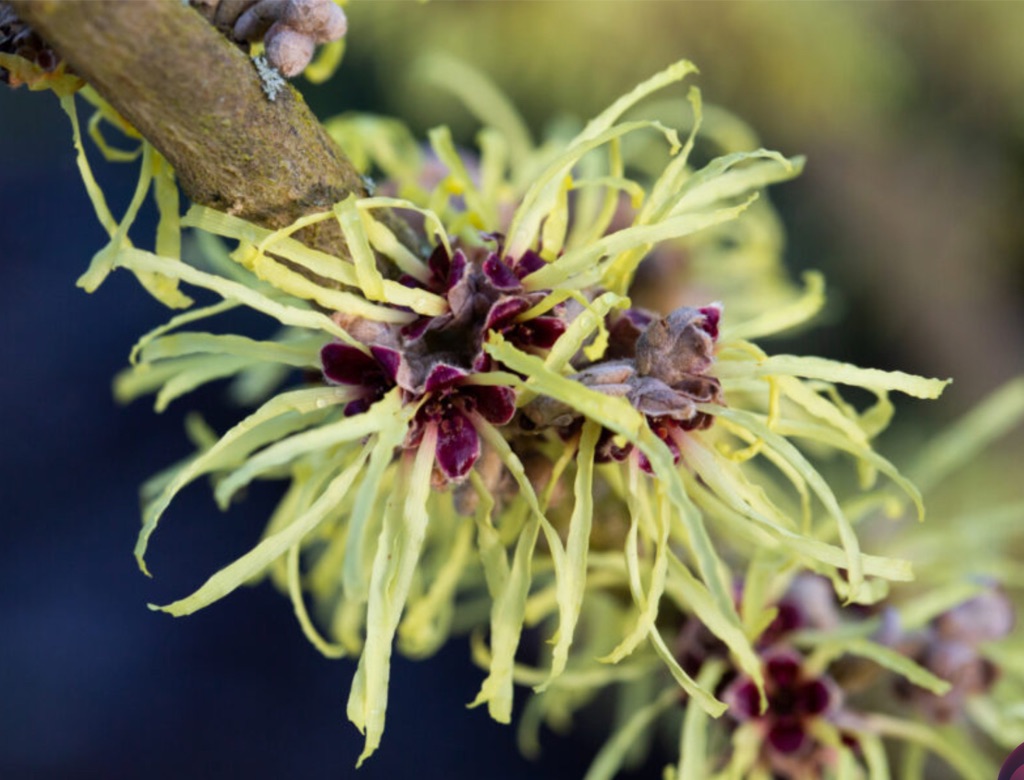
Photo 9 Hamamelis x intermedia Pallida
Hamamelis: If I had more woodland garden I would definitely plant several low, wide witch hazels for early spring flower and autumn colour in the understorey. They have curious wriggly ribbon-like petals in yellow and orange. The best yellows are Hamamelis x intermedia Arnold Promise, Pallida and Jermyn’s Gold
Coming up out of the woodland and back into the sun – roses and rock roses should strut their stuff.
Roses vary so much and are so much a personal taste that I hesitate to recommend any particular ones. There is a new cultivar from David Austin that I will plant in this garden for my old age. It is a lovely wild-looking single yellow flower on a relaxed shrub named Tottering by Gently. If I’m lucky, I’ll gently totter off in this garden.

Rock roses – the common name for subshrubs with open papery flowers belonging to the Cistaceae – the Cistus, Halimium and Helianthemum genera.
These are all drought-resistant, spring to summer flowering and perfect for the top of a sunny wall or bank. They all have short-lived flowers – the petals usually fall in late afternoon – but produce them prolifically over several months.
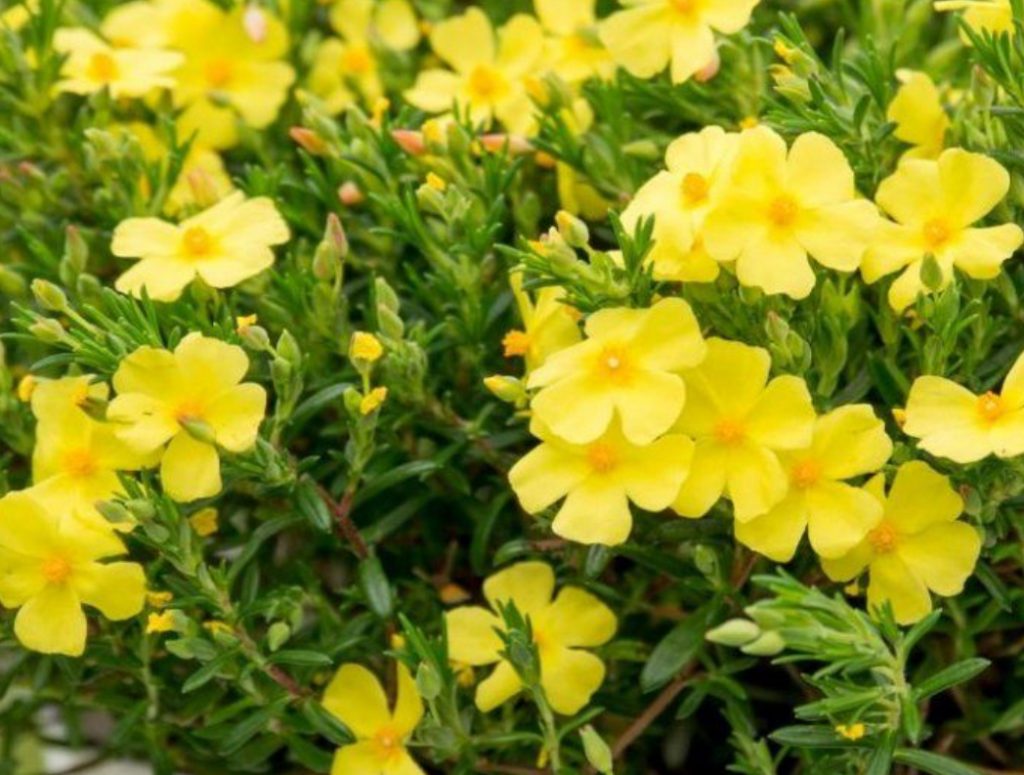
Halimiocistus x wintonensis Merrist Wood Cream is a favourite – soft yellow with a dark plum spot at the base of the petals. This is a cross between Cistus and Halimium.
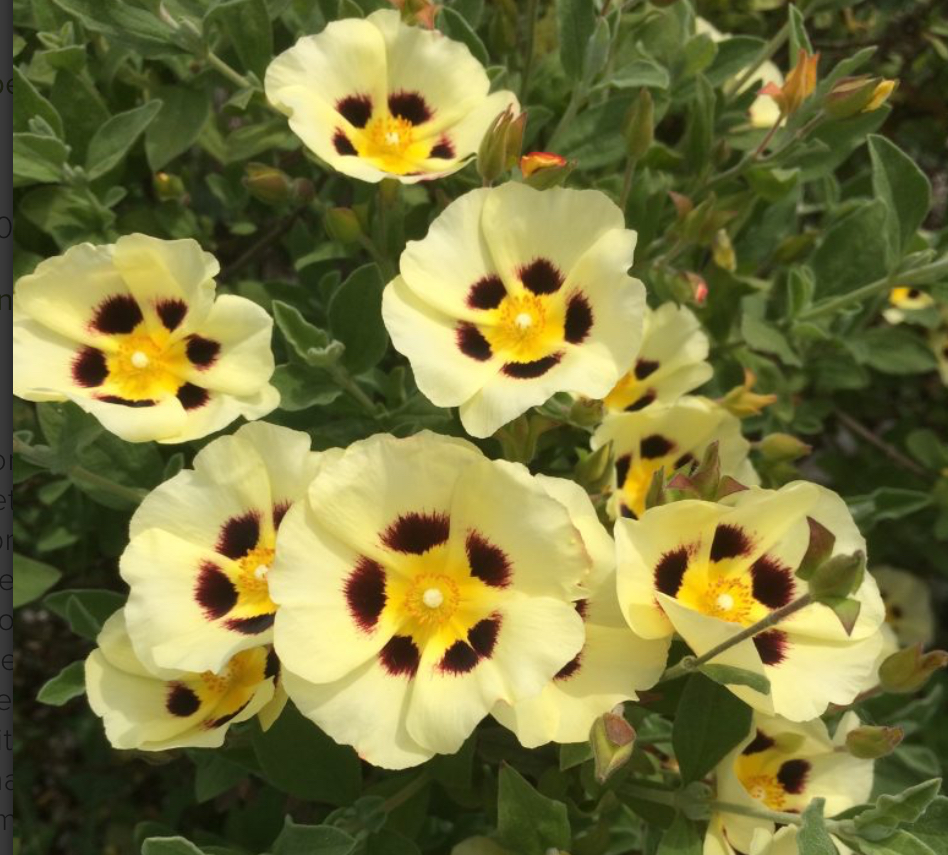
Shrubby Potentillas look very similar and like the same conditions but belong to the rose family.
Abutilon
I hope to find a sunny spot for some Abutilons – they make rather spindly shrubs but regularly cut back, they can be kept dense and floriferous. I have a lovely one called Ines – with hanging pale yellow flowers emerging from rust red calyxes.
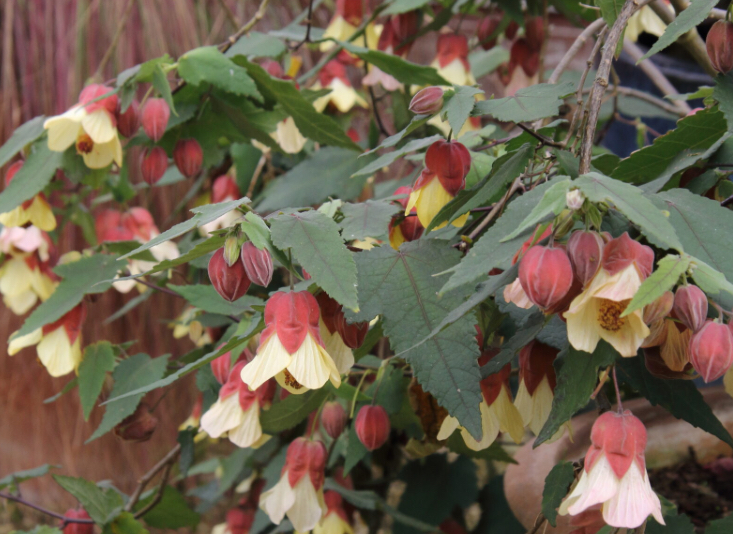
What about herbaceous plants?
I don’t think I could live without the joy of yellow daisies – and they would link the dry upper reaches of the garden down towards the jungly bottom. Argyranthemum and Euryops will be happy on dry walls, Rudbeckias, Heleniums and Helianthus in the deeper soil further down. Should I take with me the terrifically invasive Bidens triplinerva macrantha and Bidens aurea Hannay’s Lemon Drop? They’ve become a pest here but how could I leave them behind? They flower, delicately, on fine 1.5 m stems from May till the frosts come. They last for two weeks in a vase! I will have to find a way to hem them in – I’ll sink a barrier into the ground as I should for mint and then watch out for escapees.
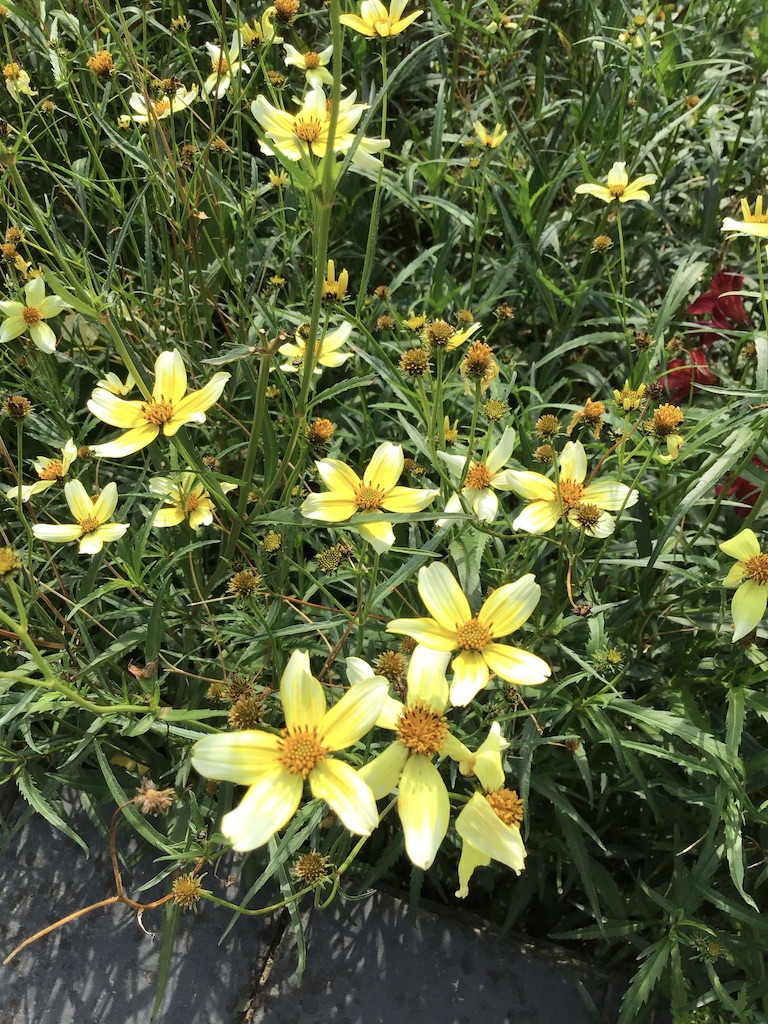
And Peonies – tree peonies and herbaceous peonies and the in betweeners, the new ITOH crosses like the wonderfully named P. Sequestered Sunshine.
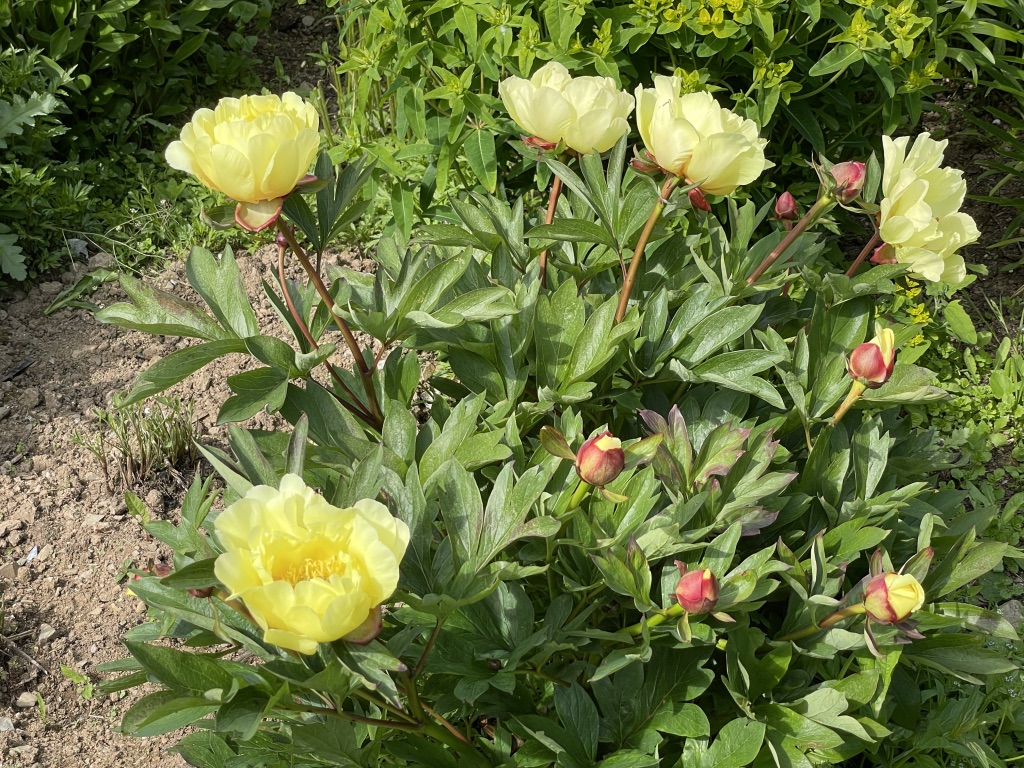
Argyranthemums and Euryops are actually subshrubs. Argyranthemum Madeira Yellow is a lovely clear pale yellow on a soft shrub of light green divided leaves. It flowers almost all year round and is only killed by frost if it’s also wet underfoot. Cuttings strike in a jar of water in days so replacements are easy.
There are many Euryops species in South Africa but the ones we usually see here are Euryops pectinatus and Euryops chrysanthemoides – both are evergreen and grow to 1-1.5 m rounded shrubs covered in intensely yellow daisies most of the year. E.pectinatus has finely-divided grey-green leaves but I will just take E.chrysanthemoides for its fresh green leaves.
Of the Rudbeckias, Rudbeckia fulgida Goldsturm is my choicest. A stiff perennial to 40cm with deep penetrating yellow spidery daisies and a black eye. I have recently discovered another though – Rudbeckia submentosa Henry Eilers – a clump-forming perennial growing to 1.2m and a bit lax but with fabulously spidery yellow daisies. Taller again, the best of the perennial sunflowers for me is Helianthus Lemon Queen – much more controllable than H. tuberosus and a lovely pale yellow.
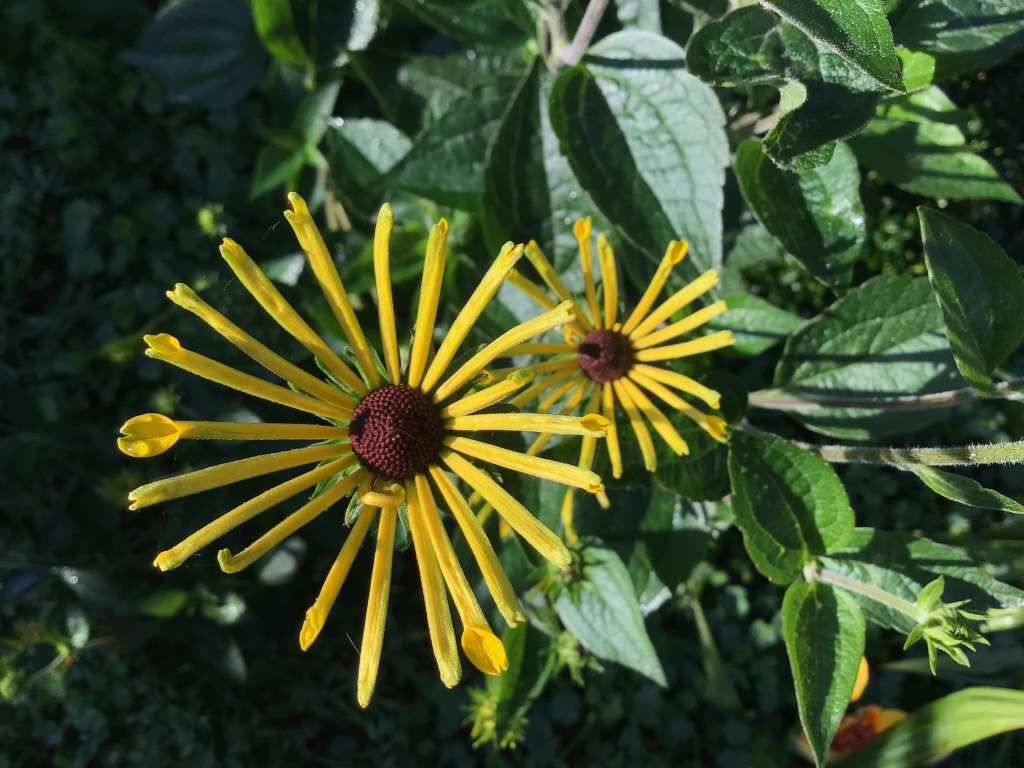
Lower down, near the pond and approaching the jungle, I will have my favourite yellow ginger lily, Hedychium gardnerianum. Growing to a metre tall, it has large, scented, pale yellow flowers in late summer. Lilium leichtlinii a lily with golden flowers, brown freckled inside that hang at head height will flower earlier in the summer. Alstroemeria – Peruvian lilies – in various shades of gold will stream down the hillside.
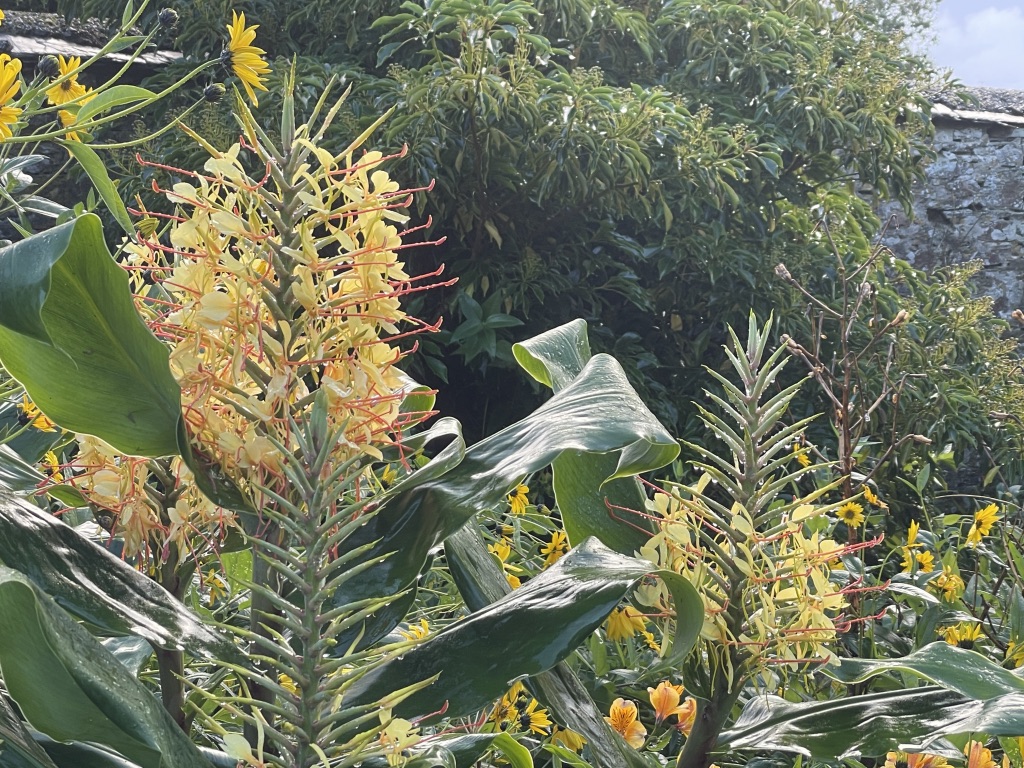

Surely there’ll be some room for Eremurus stenophyllus – Fox tail lilies.
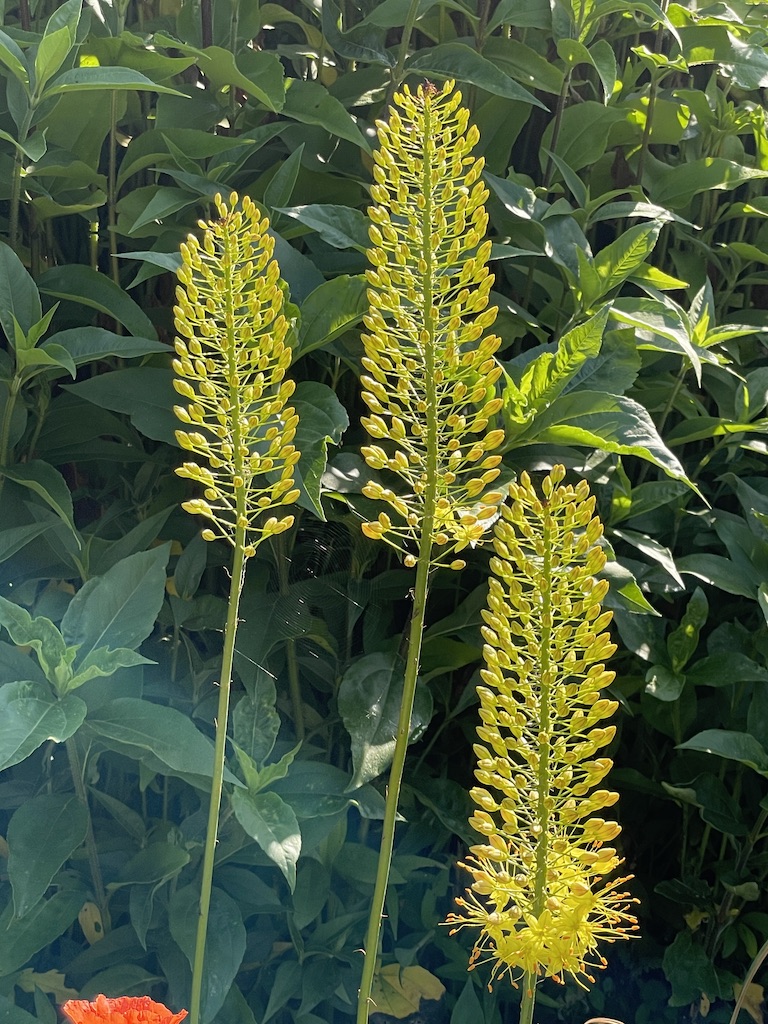
On the pond margins, I will plant a water canna, Canna glauca Ra – an elegant beauty with slender glaucous leaves and soft yellow flowers, with tall Primula florindae and native kingcups for the spring. In the water, a creamy yellow water lily with beautifully marked leaves, Nymphaea Marliacea Chromatella will flower all summer long.
And below? Below trees, Phlomis russeliana – evergreen spreading ground cover with spikes of tiered primrose-coloured flowers. Also, our native Welsh poppy Meconopsis cambricum, and a (new to me) woodland poppy from North America: Stylophorum diphyllum. Daffodils (of course) – I like the small ones best – and the dog’s tooth violet, Erythronium Pagoda, and yellow crocuses and primroses (of course) and celandines and, and….
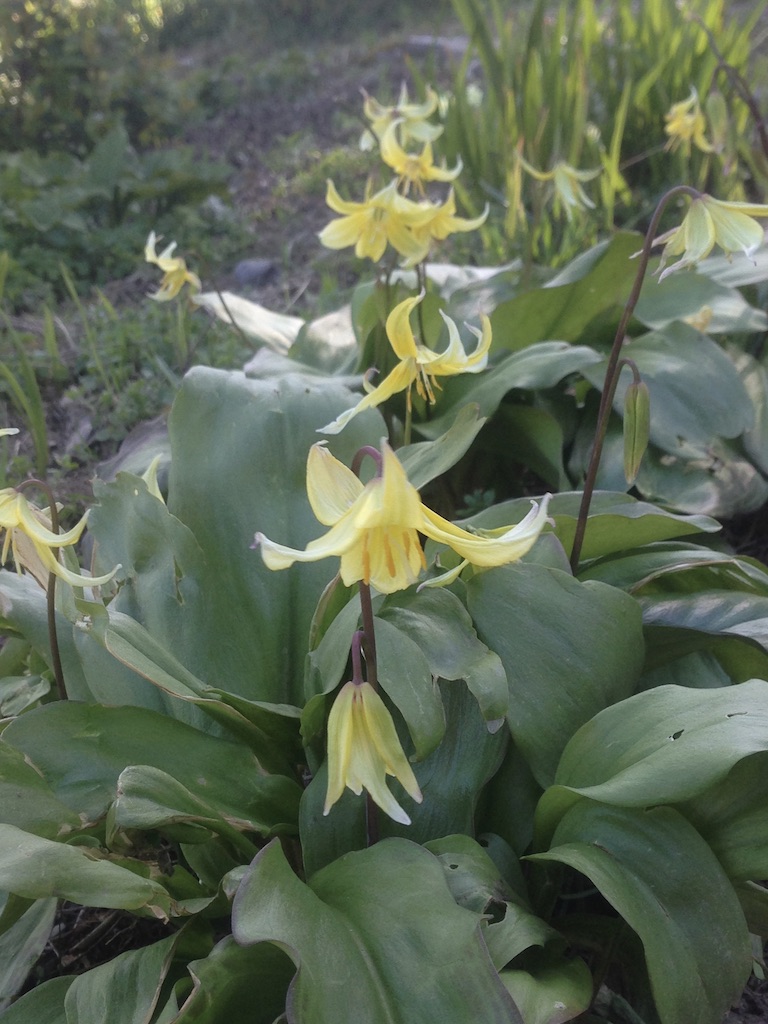
Photo 20 Erythronium Pagoda
How could anyone have a garden without yellow?

